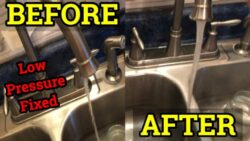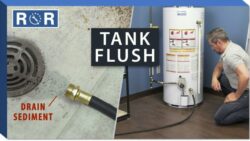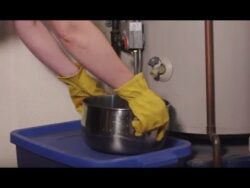In today’s unpredictable world, it is essential to be prepared for emergencies and unforeseen circumstances. One aspect of preparedness that often gets overlooked is the availability of clean, safe drinking water. Without access to clean water, our survival is compromised. That is why it is crucial to understand the importance of storing water for the long term. In this article, you will discover the ultimate guide on how to store water effectively, ensuring you and your loved ones have a reliable water supply in times of need.
Factors to Consider
When it comes to storing water for the long term, there are several important factors to consider. These factors include the source of your water, the containers you use for storage, the treatment methods you employ to ensure the water is safe to drink, and the location where you store your water. By carefully considering each of these factors, you can ensure that your stored water remains safe and usable for an extended period of time.
Water Sources
Before you start storing water, it’s essential to consider the source of your water. Different sources of water require different treatment methods and may have varying levels of contamination. Here are some common sources of water for storage:
Tap Water
Tap water is readily available in most homes and is generally considered safe to drink. However, it’s important to note that tap water may contain chemicals and contaminants that can affect its taste and quality. It’s advisable to use tap water for short-term storage and rotate it frequently.
Well Water
For those who have a private well, well water can be an excellent source of water for long-term storage. Well water is typically free of chemicals and contaminants found in municipal water supplies but may still contain natural impurities. Regular testing and treatment may be necessary to ensure its safety for long-term storage.
Rainwater Collection
Rainwater can be an excellent source of water for long-term storage, especially for gardening and irrigation purposes. However, it’s important to treat rainwater before storing it for drinking purposes, as it may contain pollutants or contaminants from the atmosphere.
Natural Springs
If you have access to a natural spring, it can provide a constant and reliable source of water for long-term storage. Natural spring water typically has a high mineral content and is often considered safe to drink without additional treatment. However, it’s still recommended to test and treat the water to ensure its safety.
Water Containers
Once you have determined the source of your water, you need to choose appropriate containers for storage. The containers you choose should be durable, food-grade, and capable of preventing any contamination or leakage. Here are some common types of containers to consider:
Plastic Bottles
Plastic bottles are a popular choice for storing water due to their affordability, durability, and availability. However, it’s important to choose bottles that are made from food-grade plastic and are BPA-free to avoid any potential health risks.
Glass Bottles
Glass bottles are another option for long-term water storage. They are non-permeable and do not interact chemically with water, ensuring that the stored water remains pure and untouched. Glass bottles are ideal for storing smaller quantities of water and are especially suitable for emergency kits.
Water Barrels
Water barrels are large containers specifically designed for water storage. They are typically made from food-grade plastic and can hold a significant amount of water. Water barrels often come equipped with spigots for easy access and can be stacked to save space.
Water Storage Tanks
For those looking for a more substantial water storage solution, water storage tanks are an excellent option. These tanks are available in various sizes and are designed to store large volumes of water. They are often made from durable materials such as polyethylene or fiberglass and can be installed above or below ground.
Water Treatment Methods
Regardless of the source of your water, it’s essential to treat it before storing it for the long term. Here are some common water treatment methods to consider:
Boiling
Boiling water is one of the simplest and most effective methods of water treatment. By bringing water to a rolling boil for at least one minute, you can kill most microorganisms and make the water safe to drink. However, boiling does not remove chemical contaminants, so additional treatment methods may be necessary.
Water Purification Tablets
Water purification tablets are compact, portable, and easy to use. These tablets typically contain chlorine-based compounds that can kill bacteria and viruses present in the water. However, it’s important to follow the instructions provided with the tablets and understand their limitations.
Chlorination
Chlorination is a commonly used method for treating water on a larger scale, such as in municipal water supplies. Chlorine effectively kills bacteria and viruses, making the water safe for consumption. However, it’s important to carefully measure and control the chlorine dosage to avoid any health risks.
Water Filtration Systems
Water filtration systems can remove impurities and contaminants from water, making it safe to drink. There are various types of filtration systems available, ranging from simple carbon filters to advanced reverse osmosis systems. The choice of filtration system depends on the quality of the source water and the specific contaminants present.
Storage Location
Where you store your water is another crucial factor to consider. The location should provide protection from sunlight, extreme temperatures, pests, and potential contaminants. Here are some common storage location options:
Indoor Storage
Storing water indoors is generally the preferred option as it offers better protection from environmental factors. A cool, dry area away from direct sunlight and chemicals is ideal for long-term water storage. Basements, closets, or dedicated storage rooms are suitable locations to consider.
Outdoor Storage
Outdoor storage can be an option if indoor space is limited, but extra precautions must be taken. Water containers should be securely covered and protected from direct sunlight, temperature fluctuations, and the possibility of damage from extreme weather conditions. It’s important to choose containers that are UV-resistant and durable enough to withstand harsh outdoor conditions.
Underground Storage
For those who have the means, underground storage can offer excellent protection for water storage. Excavating a pit and lining it with a suitable material, such as concrete or plastic, can create a secure and insulated storage area. Underground storage provides natural temperature regulation and protection against sunlight, pests, and potential contaminants.
Specific Environmental Factors
Certain environmental factors, such as seismic activity or coastal regions prone to hurricanes or flooding, may require additional considerations for water storage. In these situations, it may be necessary to invest in specialized storage solutions, such as earthquake-resistant containers or elevated platforms to prevent water contamination.
Preparing Water for Storage
Before storing water, it’s important to prepare it properly. Here are some essential steps to ensure the water remains safe and fresh during storage:
Filtering the Water
Filtering the water before storage helps remove sediment, debris, and any visible impurities. This can be done using a fine mesh cloth, coffee filter, or a water filtration system, depending on the level of filtration required.
Treating with Bleach
If you are using tap water or well water for storage, treating it with bleach can help disinfect and kill any microorganisms present. Add 1/8 teaspoon (or 8 drops) of regular household bleach per gallon of water, stir well, and let it sit for 30 minutes before storage.
Using Water Purification Tablets
Water purification tablets can also be used to treat water before storage. Follow the instructions provided with the tablets for the correct dosage and treatment time.
Boiling the Water
Boiling the water before storage is an effective way to kill most microorganisms. Bring the water to a rolling boil for at least one minute, then let it cool before transferring it to storage containers.
Water Storage Rotation
To ensure that your stored water remains fresh and safe to drink, it’s important to establish a proper rotation system. Here are some key practices for water storage rotation:
Regular Inspection
Regularly inspect the containers for any signs of damage, leakage, or contamination. Look for any discoloration, foul odor, or floating particles in the water. If any issues are detected, the water should be discarded, and the containers should be thoroughly cleaned or replaced.
Monitoring Water Quality
Perform periodic tests or use water quality test kits to monitor the safety and potability of the stored water. Testing for pH levels, bacterial contamination, and chemical pollutants can help ensure the water remains suitable for consumption.
Refilling and Replacing
To maintain a fresh supply of stored water, it’s important to regularly refill and replace the containers. This helps prevent water stagnation and minimizes the risk of bacterial growth. Aim to refill or replace the stored water every six months to one year, depending on the storage conditions and treatment methods used.
Managing Expiration Dates
If you are using commercially packaged water containers, pay attention to the expiration dates. It’s important to consume or replace the water before the expiration date to ensure its freshness and efficacy.
Emergency Water Supply Kits
In addition to long-term water storage, it’s advisable to have emergency water supply kits readily available. These kits should contain essential supplies to sustain you during a crisis or natural disaster. Here are some key components of an emergency water supply kit:
Essential Supplies
Include an adequate supply of stored water, which may vary depending on your specific needs and the number of individuals in your household. It’s generally recommended to have at least one gallon of water per person per day for a minimum of three days. Additionally, include non-perishable food, water purification methods, a manual can opener, and essential hygiene items.
Preservation Techniques
Ensure that the emergency water supply kit is properly sealed and stored in a cool, dry place away from direct sunlight. Add desiccant packets or moisture-absorbing materials to the kit to prevent any moisture buildup and potential contamination.
Portable Containers
In addition to larger containers for long-term storage, include smaller, portable containers in your emergency water supply kit. These can be used for short-term use, such as during evacuation or when on the move.
Water Purification Options
Include various water purification options in your kit, such as water purification tablets, filtration systems, or portable water purifiers. These options can be useful during emergencies when the primary water source may not be readily available or contaminated.
Tips for Long-Term Water Storage
To ensure the longevity and safety of your stored water, consider the following tips:
Labeling and Organization
Label each container with the date of storage and a description of the water source and treatment method used. This ensures that you can easily keep track of the age of the water and any necessary rotation.
Securing Water Containers
Ensure that the water containers are securely sealed to prevent any potential leakage or contamination. Store the containers in a stable and secure manner to prevent any accidental topples or damage.
Temperature Management
Avoid exposing the stored water to extreme temperatures, as this can impact the quality and safety of the water. If possible, store the water in a temperature-controlled environment to minimize temperature fluctuations.
Documentation
Maintain a written record of the water storage and rotation process. This includes details such as the source of water, treatment methods used, and dates of storage and rotation. Documentation helps ensure that you have a clear understanding of the water’s history and can assist in any future maintenance or emergency situations.
Storing water for the long term requires careful consideration of various factors, including the water source, containers, treatment methods, storage location, and proper rotation. By following the guidelines outlined in this article, you can ensure that your stored water remains safe, fresh, and usable for an extended period of time. Remember to regularly inspect, test, and refill your stored water to maintain its quality, and always be prepared with an emergency water supply kit for any unforeseen circumstances. Proper long-term water storage is essential for your peace of mind and survival readiness.





